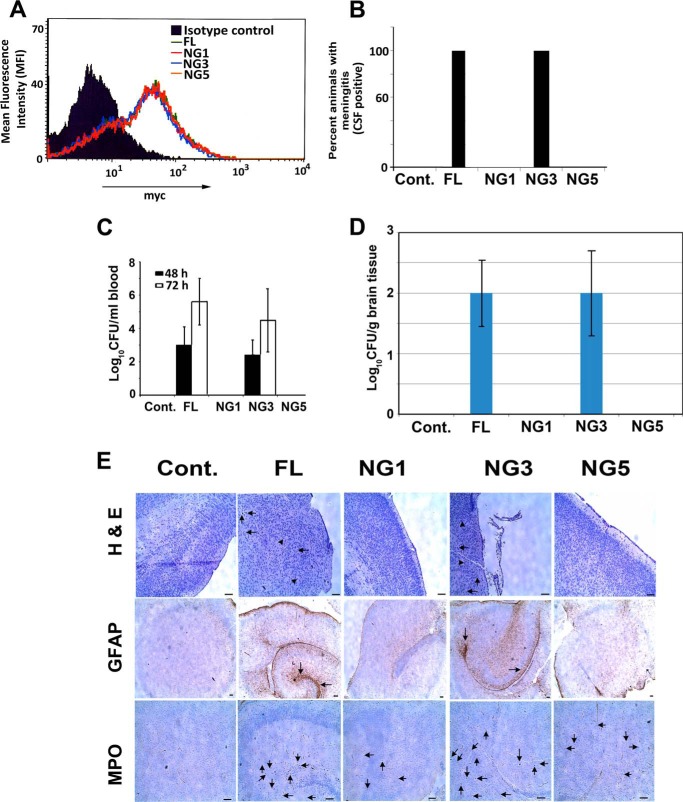FIGURE 4.
Adoptive transfer of FL and NG3, but not NG1- or NG5-transfected FcγRIa−/− BMDMs into FcγRIa−/− newborn mice restores the susceptibility to E. coli K1 meningitis. A, transfection efficiency of plasmids in FcγRIa−/− BMDMs was confirmed by flow cytometry using anti-Myc tag antibody. FcγRIa−/− newborn mice (n = 5) were adoptively transferred with FcγRIa−/− BMDMs containing different plasmid constructs at 66 h after birth and then infected intranasally with 103 E. coli K1 at 72 h. B, all five pups carrying FL or NG3 transfected BMDMs had E. coli K1-positive cerebrospinal fluid (CSF) cultures 72 h postinfection. C, bacterial load in blood at 48 and 72 h postinfection from each pup was collected and plated on LB + rifampicin to enumerate bacteremia levels. D, homogenates from half of the brain from all pups were plated on LB + rifampicin after euthanatizing them 72 h postinfection. E, the other half of the brain was preserved in formalin, embedded in paraffin, sectioned, and stained for brain pathology (H&E), GFAP, and neutrophil infiltration (MPO). Arrows represent neuronal loss in H&E stained sections or glial cells in GFAP-stained sections. Neutrophil infiltration is represented by arrowheads in H&E-stained sections and arrows in MPO-stained sections. Cont., control.

